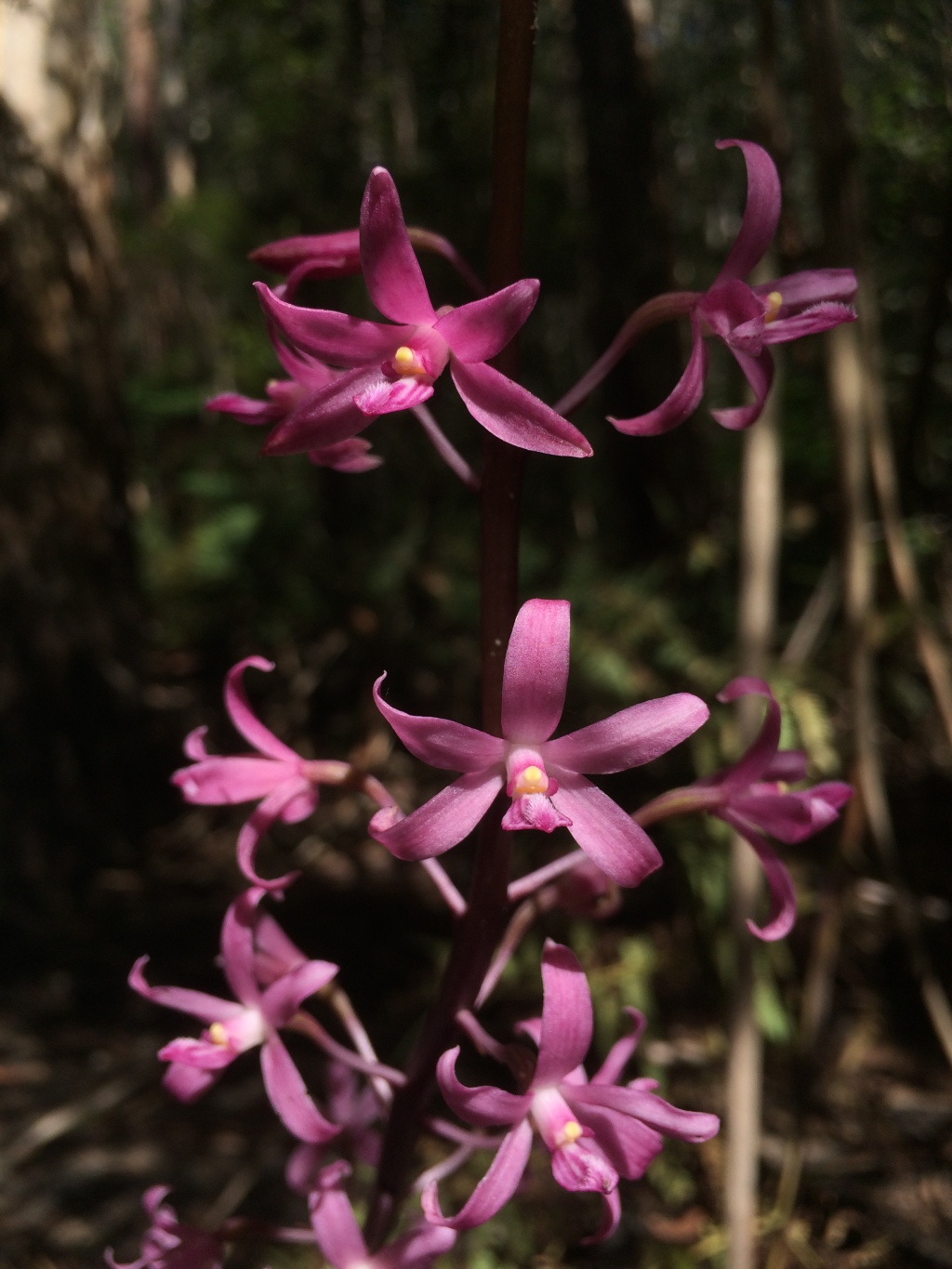Dipodium roseum
D.L.Jones & M.A.Clem Hyacinth OrchidLeafless plant, 30–90 cm tall. Stem green to dark reddish-black, inflorescence shorter than subtending flowering stem. Pedicels (including ovary) 15–23 mm long; flowers c. 15–40, pale rose pink with small, darker pink to red spots, rarely white, perianth segments strongly recurved in distal third. Sepals and petals linear to linear-elliptic, 12–20 mm long, 3–6 mm wide, petals and lateral sepals slightly asymmetric. Labellum 10–15 mm long, pink with darker pink longitudinal lines; lateral lobes linear-spathulate, upcurved, clasping column, sparsely hairy on inside of base; mid-lobe elliptic to elliptic-ovate, 6–9 mm long; lamina callus of 2 tapered, linear, more or less parallel, pubescent keels; central band of mauve hairs (c. 0.5 mm long) from apex of callus to apex of mid-lobe, usually occupying most of the dorsal surface in proximal half of mid-lobe. Flowers Dec.–Apr.
MuM, Wim, GleP, VVP, VRiv, GipP, OtP, WaP, Gold, CVU, GGr, DunT, NIS, EGL, EGU, WPro, HSF, HNF, OtR, Strz, MonT, VAlp. Also SA, NSW, ACT, Tas. The most widespread and common Dipodium in Victoria, found in all but the north-west corner of the state (one unconfirmed record from `near Dimboola'). Usually growing in forests on poor sandy or rocky soils.
Dipodium pardalinum has paler, more heavily spotted flowers than D. roseum, including a spotted labellum (longitudinally striped in D. roseum).
This species was previously included in a more broadly circumscribed D. punctatum. See also notes under D. variegatum.
Entwisle, T.J. (1994). Orchidaceae. In: Walsh, N.G.; Entwisle, T.J., Flora of Victoria Vol. 2, Ferns and Allied Plants, Conifers and Monocotyledons, pp. 740–901. Inkata Press, Melbourne.
 Spinning
Spinning


